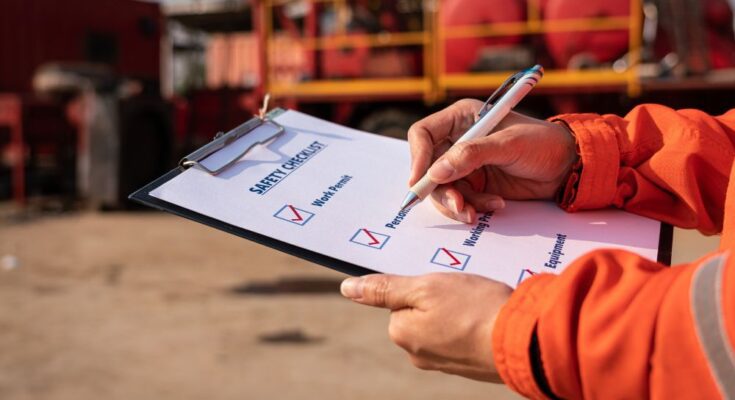Safety within the workplace isn’t merely a set of regulations but an all-encompassing mindset and approach that secures the well-being of the workforce. Cultivating a strong safety culture is a multifaceted endeavor that involves not only implementing policies but also ensuring that every employee is responsible for safety. Let’s explore some ways to create an effective safety culture.
Lead by Example
Leaders must set the standard by accepting no compromise on safety. When employees witness upper management actively engaging in safety protocols, it becomes ingrained in the organization’s ethos. CEOs and department heads can openly talk about how safety is a top priority and show commitment through their actions, not simply their words.
When leaders prioritize safety in their decisions, behaviors, and daily operations, it sends an unmistakable message to the rest of the organization. Whether it’s the visible commitment to safety equipment or the careful adherence to safety protocols, the example leaders set filters down, influencing the attitudes of all employees.
Empower Employees
Safety isn’t a one-person show; it’s a collective responsibility. Empower your employees by involving them in the decision-making processes for safety procedures. Engage in open dialogues about safety, encourage the reporting of incidents, and actively seek employee feedback on how to improve safety measures.
By fostering an environment where you value and support every employee, you create a team of safety ambassadors. When someone at the frontline feels empowered, they’re more likely to take the initiative to correct or report hazardous situations without fear of reprisal.
Support Continuous Improvement
The work environment is dynamic, and safety protocols must evolve to meet new challenges. To stay ahead, organizations should provide regular training to equip employees with the knowledge to recognize and respond to safety risks. This can involve everything from updated first-aid courses to specialized workshop safety rules everyone should know.
An organization passionate about safety never stops learning. Regular safety drills and workshops serve as refresher courses and reflective opportunities to learn from near misses. Continuous improvement ensures that safety is always at the forefront of your operation.
Provide Recognition and Accountability
Positive reinforcement can go a long way in shaping behavior. Publicly recognizing and rewarding safe practices can motivate employees and teams to maintain safety standards. Simultaneously, a culture of accountability where you swiftly and fairly address unsafe actions prevents complacency.
When employees know safety is a top priority, they’re more likely to continue such practices and encourage others to do the same. Similarly, when unsafe actions result in corrective measures, it shores up the perception that safety is nonnegotiable.
Creating and maintaining a strong safety culture is a continuous pursuit requiring ongoing commitment and iteration. By adopting these ways to create an effective safety culture, you can foster an environment where safety isn’t just a priority but a way of life. A secure workplace is the foundation of a productive, engaged, and healthy team.



